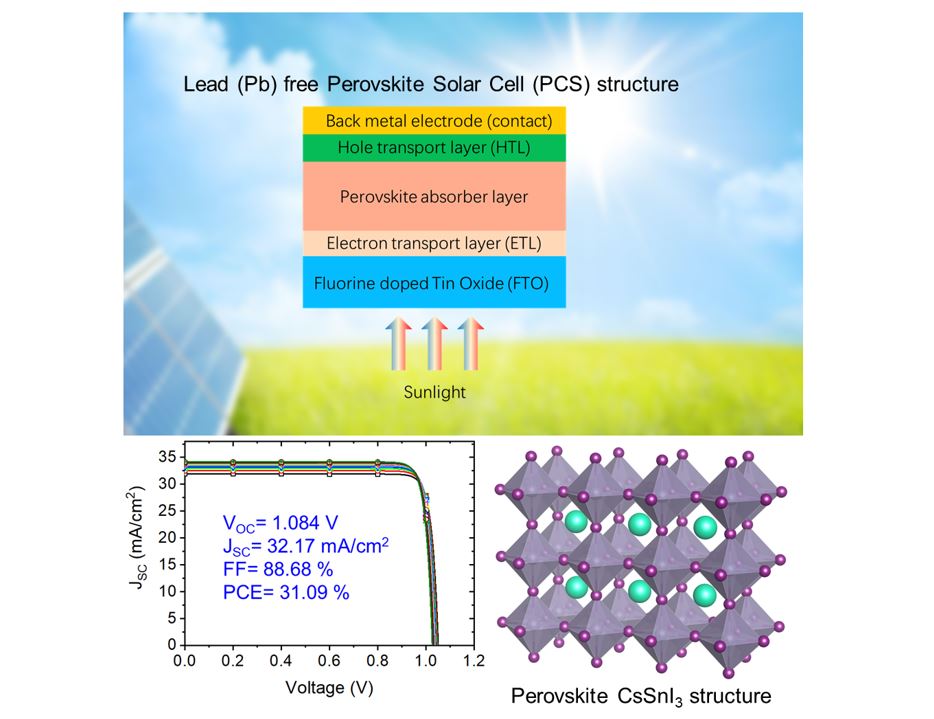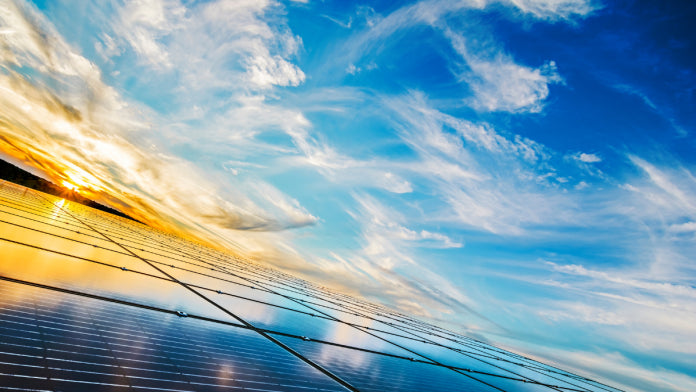https://www.pv-magazine-india.com/2023/05/19/new-perovskite-solar-cell-design-promises-31-09-efficiency/
New perovskite solar cell design promises 31.09% efficiency

Image: Nanjing University of Aeronautics and Astronautics
From pv magazine Global
Scientists from the Nanjing University of Aeronautics and Astronautics in China have simulated a solar cell based on an absorber using a perovskite material known as CsSnI3, which is an inorganic perovskite that has low exciton binding energy, a high absorbance coefficient, and an energy bandgap of 1.3 eV.
“The cell we designed is suitable for commercial production, however, this requires intensive experimental work,” researcher Azhar Ali Haidry told pv magazine.
The researchers used the SCAPS-1D solar cell capacitance software, which is a simulation tool for thin-film solar cells developed by the University of Ghent in Belgium, to simulate several cell designs with different electron transport layers (ETLs) and hole transport layers (HTLs).
Through a series of simulations, the Chinese team found that the best possible cell configuration was provided by a device based on a substrate made of fluorine-doped tin oxide (FTO), a titanium oxide (TiO2) ETL, the CsSnI3 absorber, an HTL based on nickel(II) oxide (NiOx), and back electrodes.
“The perovskite CsSnI3 thickness of 1,250 nm is found optimum for obtaining the highest performance with each ETL and HTL thickness of about 50 nm,” the academics said. “The absorber layer with around 1200−1300 nm thickness, TiO2, and NiO with 50 nm thicknesses are considered favorable to obtain high PV efficiency.”
The best-performing device built with this architecture achieved an efficiency of 31.09%, an open-circuit voltage of 1.084 V, a short-circuit current of 31.17 mA/cm2, and a fill factor of 88.68%. The researchers said the performance depended mainly on the absorber thickness, the perovskite material’s energy bandgap, the acceptor level density, and the cell’s central trap energy levels.
They described the cell in “Device Simulation of a Thin-Layer CsSnI3-Based Solar Cell with Enhanced 31.09% Efficiency,” which was recently published in Energy Fuels.
“The findings will provide the guideline for the fabrication of the CsSnI3-based PV device in the laboratory,” the scientists said.
This content is protected by copyright and may not be reused. If you want to cooperate with us and would like to reuse some of our content, please contact: editors@pv-magazine.com.




